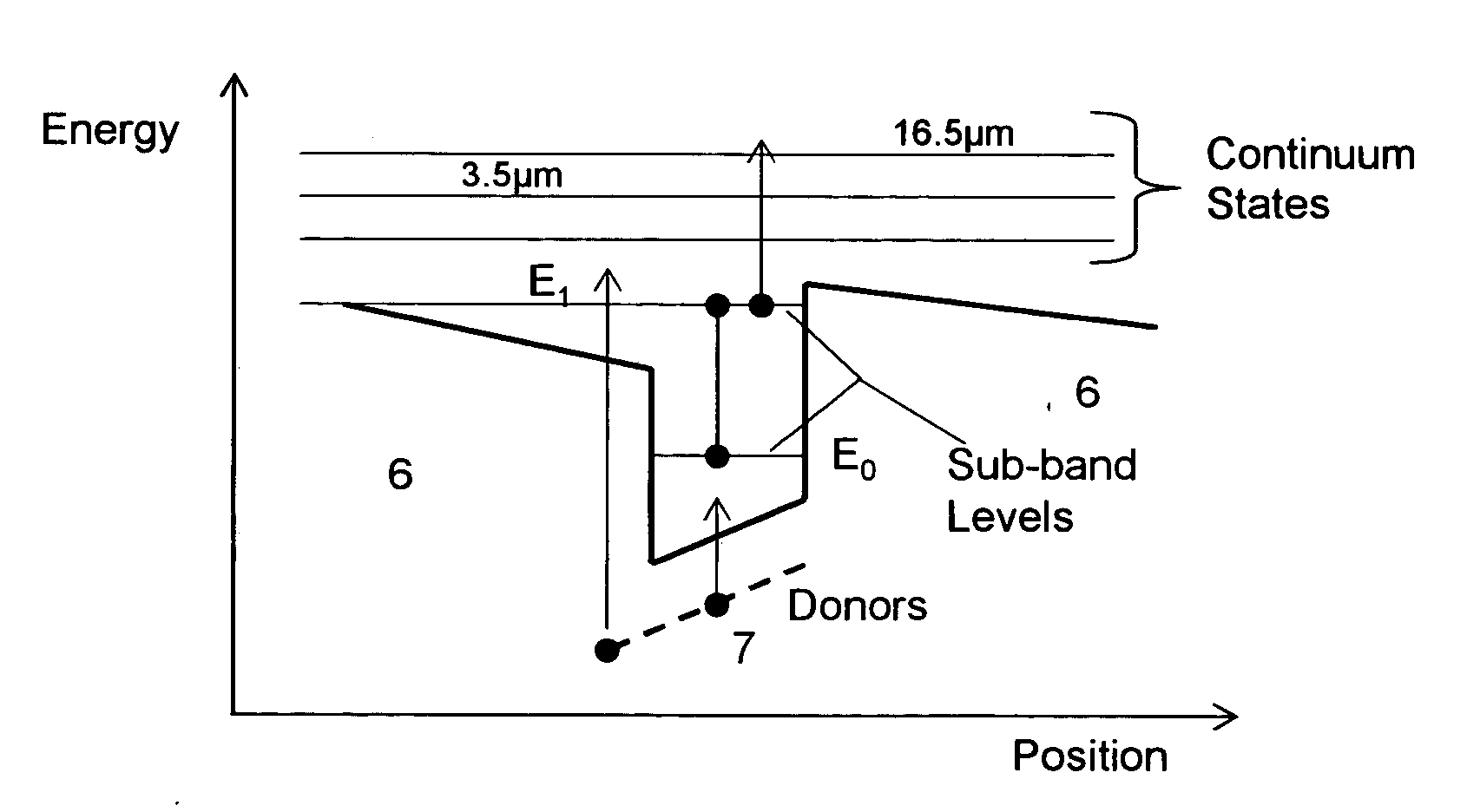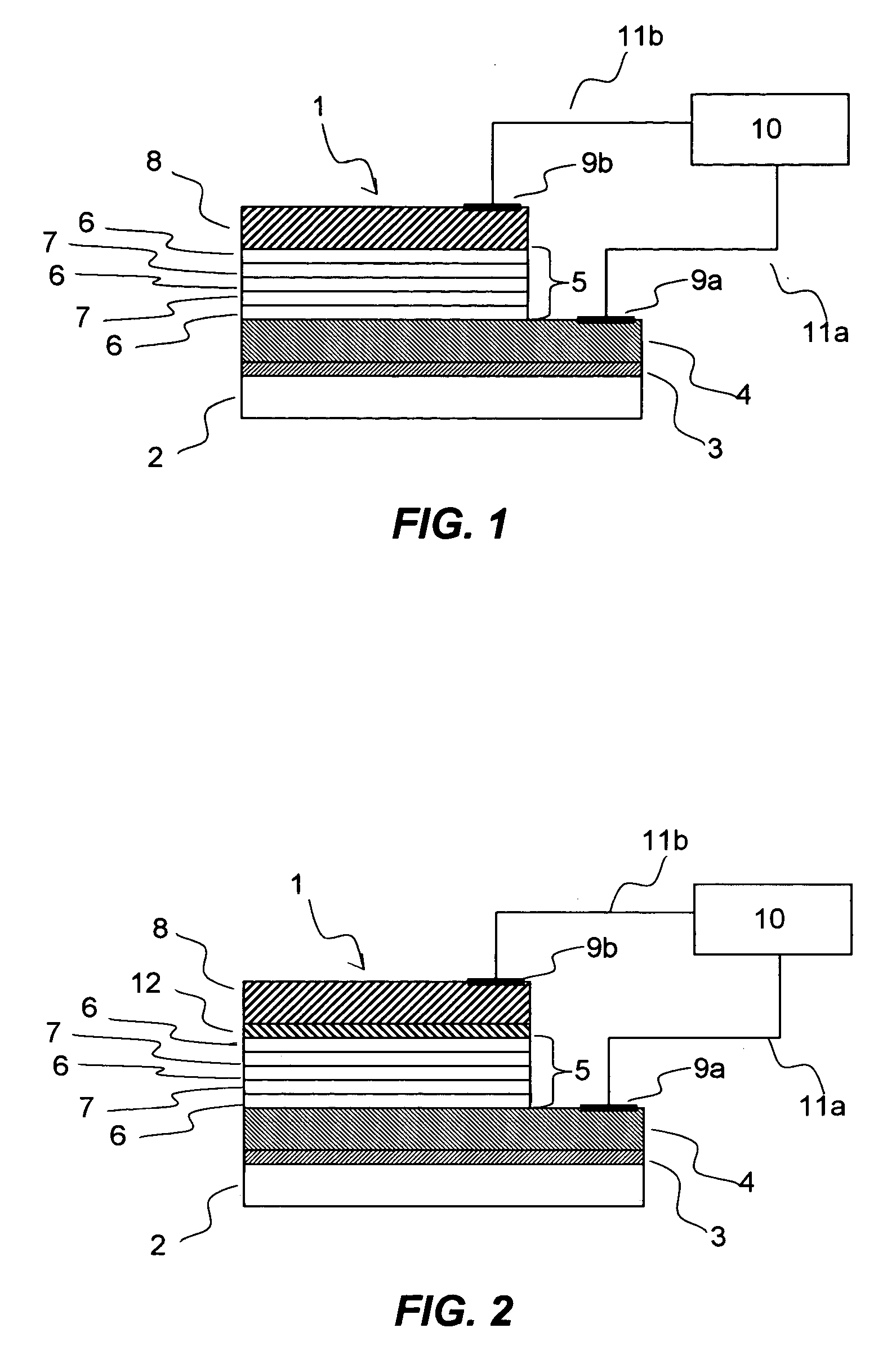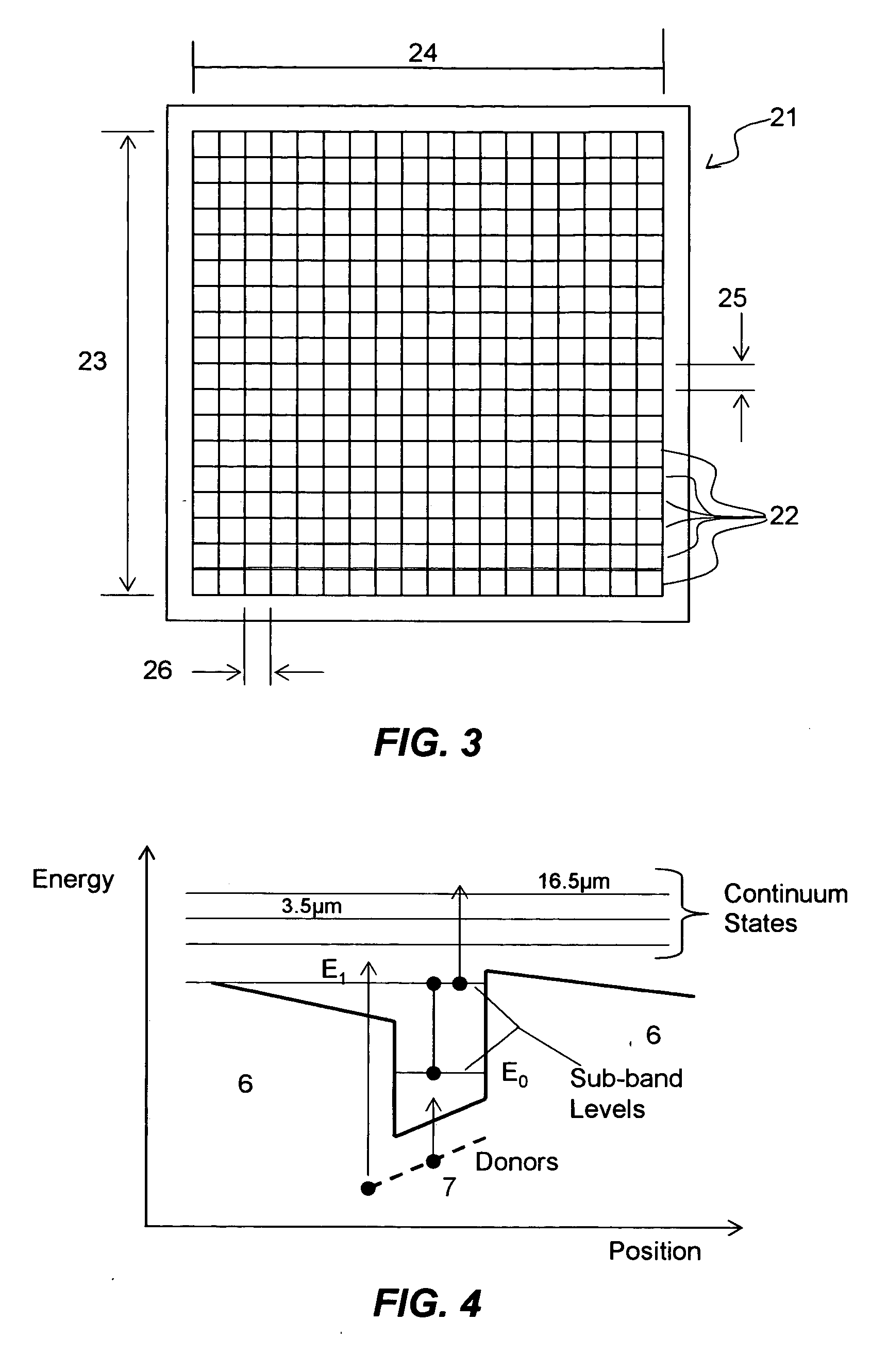Ifrared detector composed of group III-V nitrides
a nitride and infrared detector technology, applied in the field of infrared detectors, can solve the problems of limiting detector performance in practical applications, limiting the range of microbolometers and pyroelectric sensors, and affecting the accuracy of detectors, etc., to achieve the effect of improving sensitivity
- Summary
- Abstract
- Description
- Claims
- Application Information
AI Technical Summary
Benefits of technology
Problems solved by technology
Method used
Image
Examples
Embodiment Construction
[0051]FIGS. 1 and 2 describe exemplary embodiments of the present invention. FIG. 3 describes the application of detectors 1 in FIGS. 1 and 2 to a focal plane array 21. FIG. 4 graphically represents the functional performance of devices shown in FIGS. 1 and 2. FIGS. 5 and 6 describe the performance of the present invention at near to long and very long wavelengths, respectively. Drawings are not to scale.
[0052] Referring now to FIG. 1, a detector 1 is shown having a substrate 2, a buffer layer 3, a first conducting layer 4, a multiple quantum well 5, and a second conducting layer 8. Layers are contacting and attached in the order described. Conductive contacts 9a and 9b are provided along one surface of the first conducting layer 4 and second conducting layer 8, respectively. Each contact 9a and 9b is thereafter electrically connected to a lead 11a and 11b, respectively. Leads 11a and 11b are electrically connected to a current sensing device 10. Leads 11a, 11b and current sensing ...
PUM
| Property | Measurement | Unit |
|---|---|---|
| infrared wavelengths | aaaaa | aaaaa |
| quantum efficiencies | aaaaa | aaaaa |
| quantum efficiency | aaaaa | aaaaa |
Abstract
Description
Claims
Application Information
 Login to View More
Login to View More - R&D
- Intellectual Property
- Life Sciences
- Materials
- Tech Scout
- Unparalleled Data Quality
- Higher Quality Content
- 60% Fewer Hallucinations
Browse by: Latest US Patents, China's latest patents, Technical Efficacy Thesaurus, Application Domain, Technology Topic, Popular Technical Reports.
© 2025 PatSnap. All rights reserved.Legal|Privacy policy|Modern Slavery Act Transparency Statement|Sitemap|About US| Contact US: help@patsnap.com



